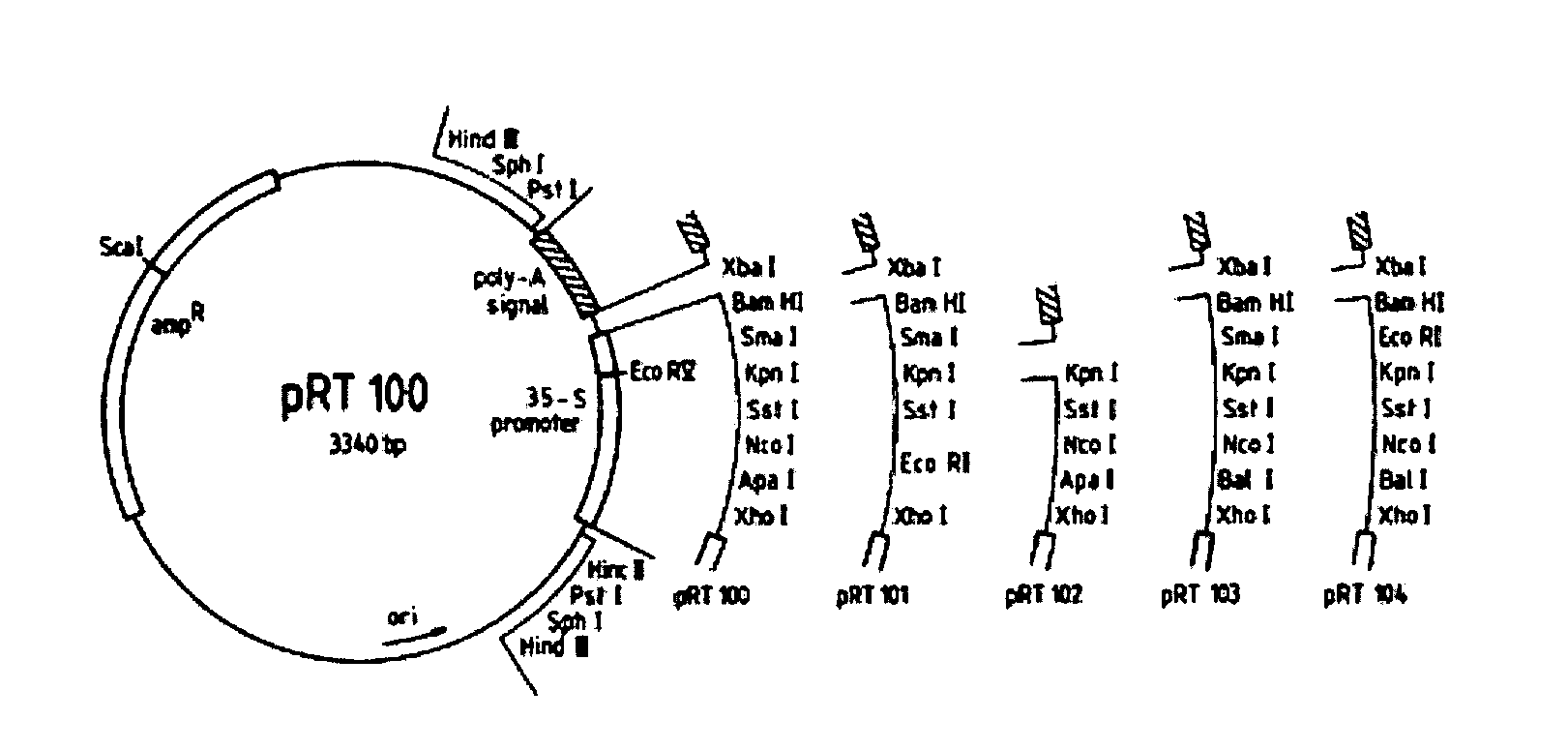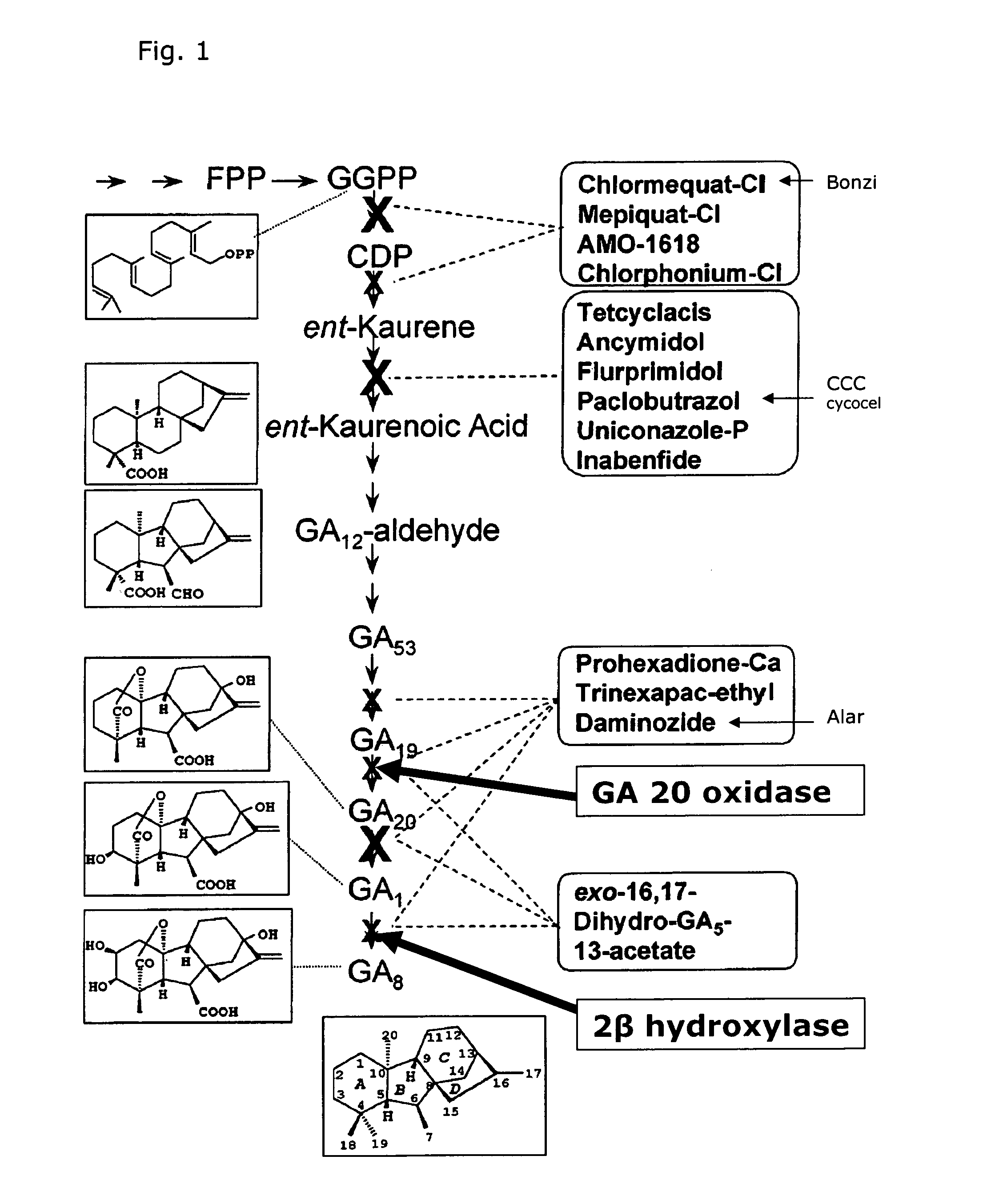Novel plants
a plant and gene technology, applied in the field of biotechnology and plant genetics, can solve the problems of difficult to predict exactly in which tissue and cell type shi is expressed during growth, and achieve the effects of increasing the flowering capacity of transgenic plants, enhancing expression, and flowering tim
- Summary
- Abstract
- Description
- Claims
- Application Information
AI Technical Summary
Benefits of technology
Problems solved by technology
Method used
Image
Examples
example 1
Retardation of Kalanchoe blossfeldiana by Ectopic Expression of Shi from A. thaliana
[0134]The open reading frame of Shi from A. thaliana was available in a TOPO pCR2.1 vector (Invitrogen) kindly provided by Eva Sundberg and Joel Sohlberg, Dept. of Plant Biology and Forest Genetics, Swedish University of Agricultural Sciences, Uppsala, Sweden. The pCR2.1 vector containing the Shi coding region, from ATG to approximately 70 base pairs downstream of the stop codon was sequenced.
[0135]In FIG. 2, the obtained sequence (Shi-TOPO-aa) is aligned with the published sequence of Shi (Fridborg et al., 1999) acc. No. AF152555. Some amino acid substitutions are apparent (shown with asterisks, but according to correspondence with Joel Sohlberg, the published sequence was isolated from the Col ecotype, whereas the cDNA used in this example was isolated from the Ler ecotype.
[0136]The Shi cDNA was isolated as a BamHI fragment. The pRT100 vector (Topfer et al., 1987) was digested with BamHI and treat...
example 2
Tissue Specific Expression of Shi from A. thaliana Under the Control of the KNAT1 Promoter from A. thaliana in Kalanchoë blossfeldiana
[0147]To increase tissue specificity, reduce side effects and minimize the risk of silencing due to ectopic overexpression of Shi by the 35S virus promoter, the Shi coding region is expressed behind the meristem specific promoter KNAT1 from A. thaliana (Lincoln et al, 1994). As shown in FIG. 5, the KNAT1 mRNA is primarily found in stems and in dark grown seedlings of A. thaliana. Thus, the KNAT1 promoter is expected to direct expression of the SHI gene in stems and elongating seedlings. The KNAT1 gene encodes a transcription factor involved in morphogenesis and is suggested to be closely coupled to regulation / repression of the GA pathway (Hay et al., 2002; Fleet and Sun, 2005). The KNAT1 promoter was kindly provided by Dr. Naomi Ori, The Smith Institute of Plant Sciences and Genetics in Agriculture, Hebrew University of Jerusalem, Faculty of Agricult...
example 3
Versatility of Retardation Through Expression of Shi; Effect of Ectopic Shi Expression in Nicotiana bethamiana
[0155]To support the versatility of Shi expression in producing retarded plants, the construct pPZP111-Kan-Intron-35S-Shi-polyA in Agrobacterium tumefaciens GV3850 described in example 1 will be used to transform Nicotiana benthamiana leaf discs according to Horsh et al., 1985. The transgenic lines will be analyzed as described in Example 1.
PUM
| Property | Measurement | Unit |
|---|---|---|
| Fraction | aaaaa | aaaaa |
| Fraction | aaaaa | aaaaa |
| Fraction | aaaaa | aaaaa |
Abstract
Description
Claims
Application Information
 Login to View More
Login to View More - R&D
- Intellectual Property
- Life Sciences
- Materials
- Tech Scout
- Unparalleled Data Quality
- Higher Quality Content
- 60% Fewer Hallucinations
Browse by: Latest US Patents, China's latest patents, Technical Efficacy Thesaurus, Application Domain, Technology Topic, Popular Technical Reports.
© 2025 PatSnap. All rights reserved.Legal|Privacy policy|Modern Slavery Act Transparency Statement|Sitemap|About US| Contact US: help@patsnap.com



